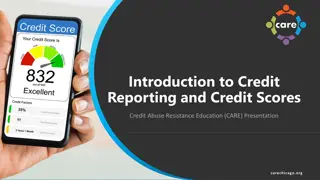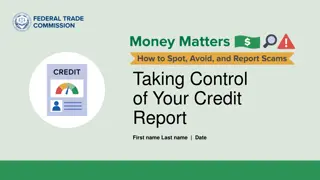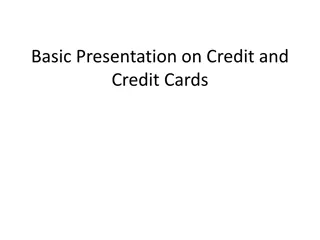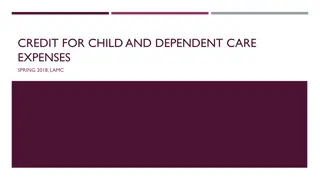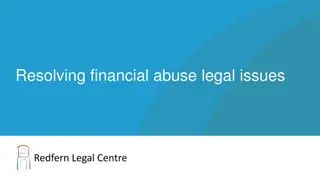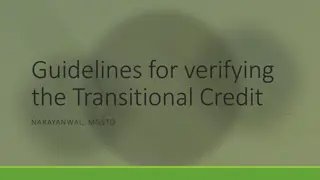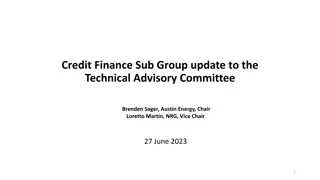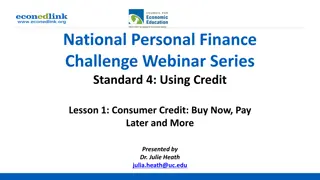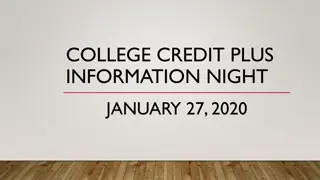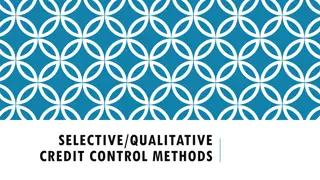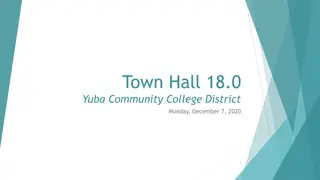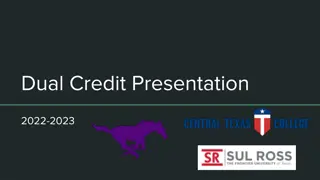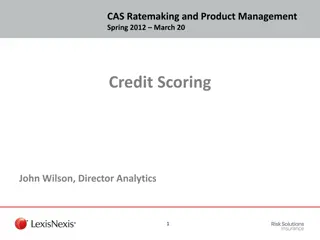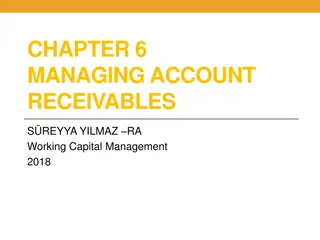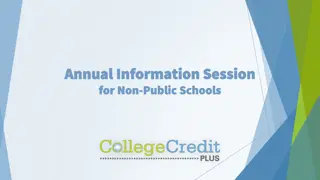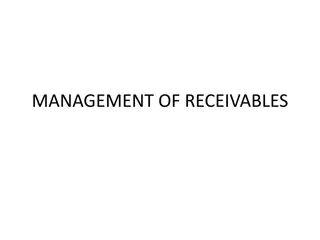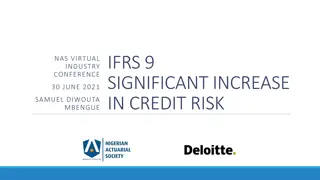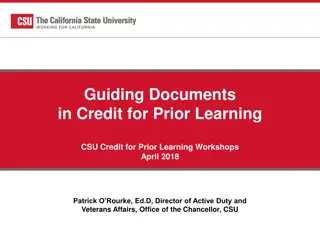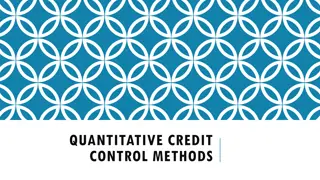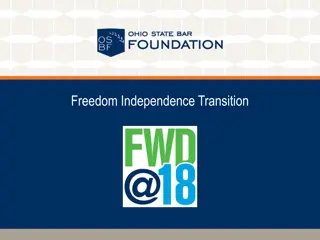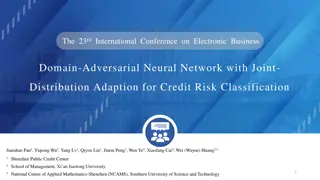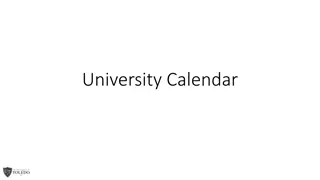Important Class Updates and Extra Credit Opportunities
Quiz on Thursday with extra credit questions, Diary Study due today, and Extra Credit R-Points for experiments available. Review questions on family values and homeostasis in families. Class discussion on illness and stigma, reactions to stigmatized individuals, and marked and markers in stigmatized relationships. Explore chimpanzees' reactions to anesthetized fellow chimpanzee.
Download Presentation

Please find below an Image/Link to download the presentation.
The content on the website is provided AS IS for your information and personal use only. It may not be sold, licensed, or shared on other websites without obtaining consent from the author. Download presentation by click this link. If you encounter any issues during the download, it is possible that the publisher has removed the file from their server.
E N D
Presentation Transcript
ANNOUNCEMENTS 1. Quiz 2 is on Thursday (April 4) a. 15 multiple choice questions + 2 Extra Credit questions 2. Diary Study a. You should complete Dairy 3 today b. Diary Study instructions on Canvas and on my website: http://nwkpsych.rutgers.edu/~kharber/healthpsychology/diary%20study/ 3. Extra Credit R-Points: a. Subject pool now open for experiment-based extra-credit b. 1 Extra Credit for every 30-minute experiment c. 6 Extra Credit points available for class d. Contact Subject Pool Coordinator for info: rutgersrpoints@psychology.rutgers.edu e. Stigma for a Day is due today.
REVIEW QUESTION 1 Following rules and personal growth are both family values. How can these two family values lead to psychological problems? ____ Rules are almost always bad ____ Growth is problematic ____ Both of these values are dangerous to family well-being ____ These two values become a problem when they conflict ____ None of the above X
REVIEW QUESTION 2 In families that overvalue homeostasis, a child can rescue the family from the crisis of disruptive conflicts by: ____ Teaming up with one of the conflicting parties ____ Taking over being a parent ____ Getting sick ____ Interrupting conversations ____ Sharing the contents of a sibling s diary X
How Do People React to the Stigmatized? Fear Revulsion Concern/pity/sympathy Fascination/curiosity Confusion/uncertainty Mixture of all the above: ambivalence
Marked and Markers: The Players in Stigmatized Relationships Marked: Those with a characteristic (physical disability, racial identity, past history, etc.) that distinguishes them from others, typically in a negative way. Markers: Those who do not deviate extremely from the norm, and through their strong reactions and because of their in-group status, have the motive and the power to assign marks to deviant others. Is stigmatizing others a distinctly human behavior? Do other species mark those who are disabled or different?
Chimps' Reaction to Anesthetized Fellow Chimp "...Don, under Nembutal, was wheeled on a hand cart up to the cages of nine other adults. Ami, Nira, and Vera showed fear, and Dean and Bokar did also but then followed this by a show of aggression at a distance; Kambi showed generalized excitation in screaming only; Frank, with hair erect, spat at the anesthetized Don, Pam first avoided then attacked through the cage wire; and Lelia, with general excitation but not avoidance, also attacked. The youngsters in the infants' enclosure were afraid, one very much so, and all showed signs of marked excitation." Hebb and Thompson, 1954 in Jones, et al., 1984.
Chimps Rejection of Handicapped Jane Goodall and chimps with polio Over time, members get used to crippled chimp, and: a. Cruelly reject But also b. Behave with kindness
Interactions with the Disabled, C/O Bloom County /Berke Breathed What s happening here?
Responses to Disabled: Statements Versus Actions Hastorf, et al. 1979 A. Verbal Report: B. Non-verbal behavior 1. Terminate interview sooner 2. More motor inhibition (sit rigidly) 1. Say they prefer meeting with a disabled vs. able-bodied 2. Express opinions that match those of disabled person . Why the mismatch? .
Socially Managing a Disability How do able-bodied (e.g., markers ) feel around disabled? Disturbed, anxious, self-conscious, curious, ambivalent. Do disabled know what affect they have on able- bodied? Generally, yes. How could they not? Should handicapped acknowledge handicap or ignore it?
Elephant in the Room: A Wise Debate Tactic? https://www.youtube.com/watch?v=_nSVAUZUMGA
Acknowledging the Disability Hastorf, Wildfogel, & Cassman, 1979 Question: Do people prefer disabled person who acknowledges disability? Method Study 1: Ss watch video of disabled student interviewed about starting college. Student acknowledges/doesn t acknowledge disability Ss rate how much they like student, how much want to work with him. 71 _____% like acknowledger more than non-acknowledger 79 ____% prefer working with acknowledger over the non-acknowledger
Acknowledging the Disability Hastorf, Wildfogel, & Cassman, 1979 ______ _______ Study 1 found: Being open and acknowledging a disability increases liking. Problem: How many causes are tested here? Method Study 2: Ss watch video of disabled person who acknowledges: a. Disability b. Girlfriend problem ( weird religious trip girlfriend s mom laying on me ) Which disabled person is like more? X _____ Acknowledges disability ____ Acknowledges other problem
Acknowledging the Disability: Stressed and Open vs. Cool and Avoidant Hastorf, Wildfogel, & Cassman, 1979 Hastorf et al. predict that the style of disclosing disability will matter. They expect Ss will not like disabled person who discloses uncomfortably. Why? Disabled person s discomfort will make Ss uncomfortable dislike. You agree? Why / why not? Ss prefer person who: a. Acknowledges but with clear discomfort and awkwardness. b. Does not acknowledge but is very poised and cool. X Why? Perhaps courage is attractive.
Staring at Strange Strangers Ellen Langer, 1976 Disabled can be disturbing, upsetting. Do we want to avoid looking or do we want to stare? Why? Langer Study 1: Do people want to stare at physically unusual? Ss can stare at a typical, a pregnant woman, a person in leg brace. Who do Ss stare at more? Spend more time staring at pregnant woman, leg-brace, than typical. Conclusion: People fascinated by the unusual.
Staring at Strange Strangers, cont. Ellen Langer, 1976 Is it ever OK to stare at the disabled? What happens if we try to suppress desire to stare (recall Wegner White Bear studies)? Langer Study 2: Ss can stare, or not stare, at person wearing a leg brace. Ss then talk with person. Who sits closer, those who stared or those who didn t stare? Ss sit closer to person in leg-brace if they first had chance to stare. Why? Discomfort of trying to suppress curiosity is gone.
How Stigma Affects the Stigmatize: The Looking Glass Self * We know who we are based on the way others respond to us. * Others' responses serve as a social mirror. * Let's us know if we're liked/disliked, attractive/unattractive, smart/limited, etc. * Helps us gauge our own emotional reactions to difficult, unusual events. * Provides us feedback about the appropriateness of our own actions. How would stigma affect the social looking glass/mirror?
Stigma and the Warped Looking Glass I always felt when I went into some boutique, that all the salesgirls were staring at me.... I always felt that the first thing anyone would notice is that I was fat...and they would know why I was fat. They would know I was neurotic, that I was unsatisfied, that I had problems. They could tell immediately that I was out of control. I always look around to see if there was anyone as fat as me. I always wondered when I saw a fat woman, "Do I look like that?"
Being Both Hyper-visible and Invisible Hypervisible: Everyone notices you because of the mark the facial disfigurement, the radiation-treatment hair loss, the wheelchair. Invisible: But people still seem to not see you. I am invisible, understand, simply because people refuse to see me. ...it is though I have been surrounded by mirrors of hard, distorting glass. When they approach me they see only my surroundings, themselves, or figments of their imagination indeed, everything and anything except me. Ralph Ellison, Invisible Man, 1947
Stigma Corrodes Self Esteem: The Darkened Looking Glass One of the most direct effects of stigma is threat to self-esteem. -- Defined in terms of stigma -- Avoided, shunned, ostracized -- Non-stigmatized features are overlooked Self-stigmatizing Internalizing other's negative view of oneself. Not just that one is fat or gay or blind or alcoholic, but rather that one is therefore fundamentally flawed as a person sick, weak, immoral, or evil. In Goffman's terms, one has a spoiled identity ".
How Disability Can Change Self Schema Post Disability Pre Disability Paraplegic Many X Many Opportunities Opportunities Anxious X Busy Busy Dependent SELF SELF Avoided Athletic X Athletic X Popular Popular X X Runner Biker Runner Biker
Creating New Reference Groups After acquiring a stigma (cancer, , AIDS, paraplegia, etc.) it can help to develop ties to others with similar condition. Why? a. Social comparison b. Recognition of one's own non-stigmatized features. c. Recognizing difference from others who share stigma. BUT, important to not belong ONLY to community of stigmatized. Why? a. Need to reenter mainstream. b. Need to get feedback from "markers", which may be more realistic
In-Between Stigma Status Some people are not fully stigmatized, not fully "normal" * Partially deaf, partially blind * Loss of one limb, but otherwise can walk These people are not fully accepted by mainstream, but also not fully accepted by the stigmatized group. The "unblinded"--and their unexpected social challenges.




